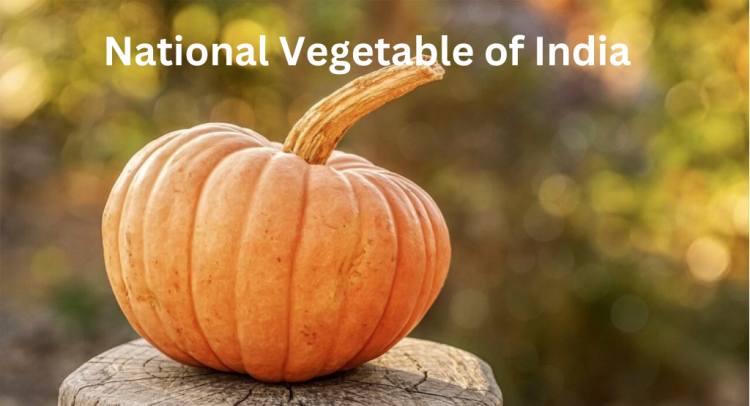National Vegetable of India, Know Its Name and Significance [Current Affairs]
The Indian Pumpkin, known as “Kaddu” in Hindu, boasts the prestigious distinction of being national vegetable of India. Its widespread cultivation throughout the country, coupled with its resilience in various soil conditions, firmly establishes it as a key component in Indian culinary practices. This versatile vegetable can be cultivated as both a climbing plant and a creeper, highlighting its adaptability.
National Vegetable of India
The Indian Pumpkin, also known as “Kaddu” in Hindi, is celebrated as India’s national vegetable. This versatile and resilient vegetable is a staple across the country due to its ease of cultivation and nutritional benefits.
Know About the Indian Pumpkin
The Indian Pumpkin is a widely grown vegetable known for its mild sweetness and adaptability. It thrives in various soil conditions and climates across India. The pumpkin’s growth pattern can be either as a climbing plant or a spreading vine, showcasing its versatility.
Characteristics:
- Appearance: It has a thick shell that encloses seeds and pulp.
- Varieties: Commonly referred to as Cucurbita pepo, though Cucurbita maxima and Cucurbita moschata are also similar.
Family and Genus of Indian Pumpkin
Understanding the botanical classification helps in recognizing the pumpkin’s place in the plant kingdom.
- Family: Cucurbitaceae
- Genus: Cucurbita
The Cucurbitaceae family includes a variety of plants known for their trailing vines and edible fruits. Within this family, the Cucurbita genus includes pumpkins, squashes, and other similar vegetables, characterized by their large, round fruits filled with seeds and pulp.
Why Pumpkin is the National Vegetable of India?
Indian pumpkin’s status as the national vegetable is not by chance. Here are a few reasons behind this distinction:
- Versatility in Cooking: Indian Pumpkin can be easily cooked and pairs well with various flavors. Its adaptability in the kitchen makes it a go-to ingredient for a multitude of dishes.
- Sweet and Savory: The pumpkin’s sweet taste complements not only other vegetables but also lentils and spices, making it a delightful addition to diverse recipes.
- Tropical Delight: Thriving in the tropical regions of India, Indian pumpkin stands strong even during the hottest days of the year.
- Year-Round Friend: Its ability to grow in the hottest months ensures a steady supply of this vegetable for Indian households.
Conclusion
In the realm of Indian cuisine, the Indian pumpkin has achieved a unifying status by being declared the national vegetable. Its ability to grow with ease, adapt to various dishes and enhance flavors adds to its significance. From simple home kitchens to complex recipes, the Indian pumpkin plays a vital role, uniting taste buds and embodying the essence of Indian culinary culture.
Find More General Studies News Here
Source: currentaffairs by adda247



![Indian Origin lecturer win the prize for literature in Singapore [Current Affairs]](https://officialsarkar.in/wp-content/uploads/2024/09/Indian-Origin-lecturer-win-the-prize-for-literature-in-Singapore-768x432.jpg)
![Top-10 Spinach Producing Countries in the World [Current Affairs]](https://officialsarkar.in/wp-content/uploads/2024/09/Top-10-Spinach-Producing-Countries-in-the-World-768x432.png)
![Visa Partners With Skill India To Up Skill 20,000 Youth For India’s Booming Tourism Industry [Current Affairs]](https://officialsarkar.in/wp-content/uploads/2024/08/Visa-Partners-With-Skill-India-To-Up-Skill-20000-Youth-For-Indias-Booming-Tourism-Industry-768x432.png)
![CID Full Form, Its Branches, Functions and Ranks [Current Affairs]](https://officialsarkar.in/wp-content/uploads/2024/09/CID-Full-Form-01-768x433.png)

![Yogesh Kathuniya Wins Silver In Men’s Discus Throw F56 [Current Affairs]](https://officialsarkar.in/wp-content/uploads/2024/09/Yogesh-Kathuniya-Wins-Silver-In-Mens-Discus-Throw-F56-768x432.png)